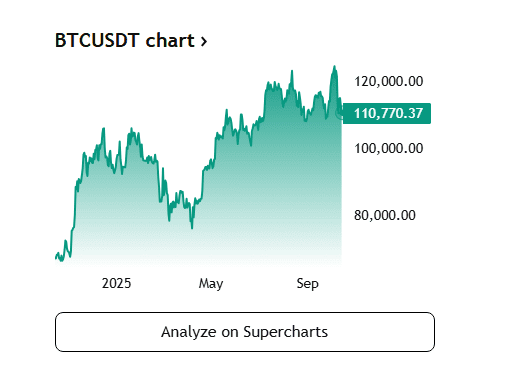The landscape of crypto treasuries is rapidly shifting as companies in the digital asset space are increasingly exploring mergers and acquisitions (M&A). This trend is reshaping the future of digital asset companies and creating a more consolidated market. Crypto treasuries, which refer to the holdings of digital assets like Bitcoin, Ethereum, and Solana, are becoming pivotal in corporate financial strategies. As the market matures, companies are using M&A to strengthen their positions, increase liquidity, and enhance their competitiveness.
The growing importance of digital asset treasuries (DATs) has led to the realization that only a few large players will dominate the market. With the battle for supremacy intensifying, companies are consolidating their resources to hedge against market volatility, regulatory pressures, and increasing competition. This consolidation may lead to a more streamlined, efficient market where the largest firms control significant portions of the total digital asset supply.
What Are Crypto Treasuries?
Crypto treasuries are the holdings of cryptocurrencies by corporations or institutional investors. These digital assets can serve a variety of purposes, including capital appreciation, hedging against inflation, and generating returns through staking or lending. Companies like MicroStrategy, Tesla, and various blockchain firms maintain substantial Bitcoin holdings as part of their treasury strategies. For example, MicroStrategy holds over 100,000 Bitcoins, making it one of the largest corporate holders of this cryptocurrency.
As these companies acquire and hold significant amounts of digital assets, they are becoming key players in the crypto economy. This is in contrast to traditional companies that may have treasury assets in the form of cash or gold. In the crypto world, holding large amounts of assets like Bitcoin allows firms to benefit from long-term price appreciation and even generate income through staking or DeFi activities.
Why Are Mergers and Acquisitions (M&A) Becoming Popular in Crypto Treasuries?
The primary driving force behind the rise of M&A in the crypto treasury sector is the need for scalability. As the market matures and competition increases, smaller players are increasingly looking to merge with larger entities to gain access to additional liquidity and resources. This allows them to compete more effectively in a market dominated by a few large players. Mergers and acquisitions also enable firms to acquire specialized expertise, technology, and infrastructure that may be more difficult to develop internally.
By consolidating assets, companies can increase their competitive advantage, enhance operational efficiencies, and position themselves as dominant forces in the market. This trend mirrors the broader tech industry, where mergers have become a common strategy for achieving growth, enhancing market share, and capitalizing on synergies. A notable example is Strive’s acquisition of Semler Scientific, which reflects the growing trend of companies seeking to increase their market influence through strategic acquisitions.
How Do Crypto Treasuries Utilize Digital Assets Like Bitcoin, Ether, and Solana?
Crypto treasuries primarily focus on Bitcoin due to its role as the first cryptocurrency and its recognition as a store of value. Many firms hold Bitcoin as a long-term investment, with the expectation that its price will increase over time. However, Ether and Solana are also gaining traction. Ethereum, the blockchain platform behind Ether, enables companies to use their tokens in DeFi applications and earn passive income through staking.
Solana, known for its high transaction speed and lower costs compared to Bitcoin and Ethereum, is another asset many crypto treasury companies are adding to their portfolios. Solana’s potential for scalability in decentralized applications and DeFi makes it an attractive option for firms seeking to diversify their crypto holdings.
Holding a range of digital assets allows crypto treasuries to mitigate risks and capitalize on the unique advantages of each blockchain ecosystem. These holdings are not just about accumulation; they’re strategic assets that companies use to generate returns and enhance their overall financial health.
What Impact Will Mergers and Acquisitions Have on the Crypto Treasury Market?
The M&A trend is expected to lead to a consolidated crypto treasury market. This consolidation will likely result in a smaller group of dominant players controlling the majority of digital assets in circulation. As companies grow larger through acquisitions, they will have more resources to navigate regulatory uncertainty, enhance their staking operations, and scale up DeFi participation.
Furthermore, consolidation may have a significant impact on cryptocurrency prices. As major firms accumulate more Bitcoin and other digital assets, they can influence the supply and demand dynamics of the market, potentially pushing prices higher. Additionally, larger firms may be able to offer more stability to the market by securing liquidity and increasing investor confidence in the long term.
While the prospect of fewer dominant players controlling the market may seem concerning, it could also lead to a more efficient and stable ecosystem. Mergers could result in companies pooling their resources, which would foster more robust innovation and research in the blockchain and cryptocurrency space.
How Does Regulation Affect Crypto Treasuries?
As regulations surrounding digital assets continue to evolve, crypto treasury companies are under increasing pressure to comply with government policies. Regulatory frameworks related to anti-money laundering (AML), taxation, and capital gains are becoming more stringent. Global authorities, including the U.S. Securities and Exchange Commission (SEC), have made it clear that cryptocurrency markets must comply with the same standards as traditional financial markets.
For companies holding large amounts of digital assets, regulatory compliance is essential. Firms need to establish robust internal controls to meet the regulatory standards of various jurisdictions. For example, companies must ensure that their staking activities comply with securities regulations to avoid legal challenges. Therefore, many crypto treasuries are investing heavily in legal and compliance resources to navigate the complex regulatory landscape.
The need for clear regulatory frameworks is driving the consolidation of firms, as larger entities are better positioned to comply with evolving laws and influence regulatory decisions.
How Are Crypto Treasury Firms Generating Returns Beyond Holding Assets?
While holding digital assets is a significant part of their strategy, many crypto treasury companies are increasingly looking to generate passive income through strategies like staking and DeFi. Staking involves locking up assets to support blockchain networks in exchange for rewards, often yielding annual returns of 5-10%. This provides crypto treasuries with a way to increase their holdings without needing to sell their assets.
In addition to staking, many crypto treasury firms are engaging in DeFi activities, such as lending their assets to earn interest or using yield farming techniques to amplify returns. These strategies come with risks but offer potentially high rewards for firms that have the right infrastructure and knowledge to execute them effectively.
As the market evolves, it’s likely that new strategies will emerge, offering further ways for treasury firms to monetize their assets and generate revenue streams.
How Do Share Buybacks Fit Into Crypto Treasury Strategies?
Share buybacks are another strategy that many crypto treasury companies use to boost shareholder value. By repurchasing their own shares from the open market, companies can reduce the total number of shares in circulation, which typically increases the stock price.
However, buybacks are a short-term strategy and don’t necessarily reflect the long-term health or growth potential of the company. If investors perceive the buybacks as a signal that the company lacks growth opportunities, this can negatively impact stock prices. Therefore, crypto treasury firms must balance buybacks with long-term investment strategies, ensuring that they are effectively managing their digital assets to build value over time.
What Does the Future Hold for Crypto Treasuries?
Looking ahead, crypto treasuries will continue to play a central role in shaping the future of digital asset markets. Mergers and acquisitions are likely to continue as companies seek to consolidate their positions and enhance their market influence. As regulatory frameworks evolve and the crypto market matures, firms that have successfully navigated these challenges will emerge as dominant players.
The long-term outlook suggests that larger companies will control a significant portion of digital assets like Bitcoin, Ether, and Solana. This could lead to more stable prices and greater market efficiency, as fewer players control the supply of these critical assets. Investors will need to stay informed about these trends and consider the growing importance of crypto treasuries in their investment strategies.

Iqra Zahoor is a Financial Journalist and Crypto Market Analyst with a Bachelor’s Degree. She specializes in translating complex blockchain developments and market volatility into actionable, unbiased intelligence. Iqra is committed to rigorous research, ensuring readers receive only the most reliable and timely insights into the digital asset space.



